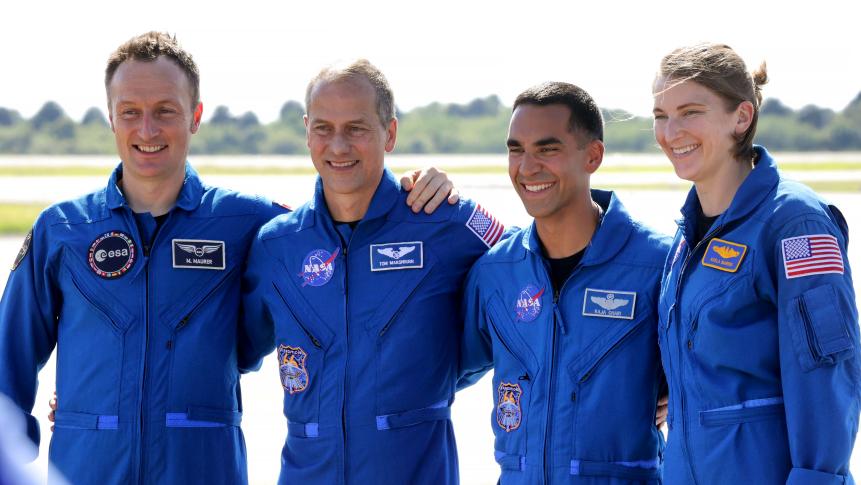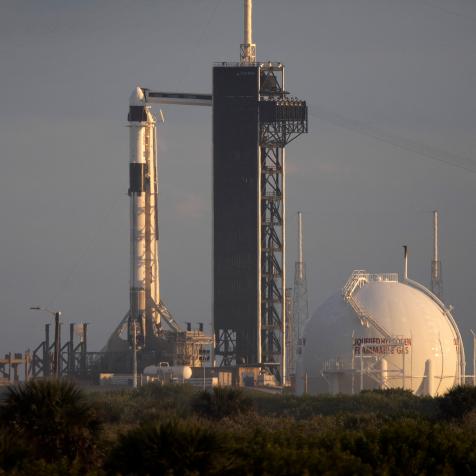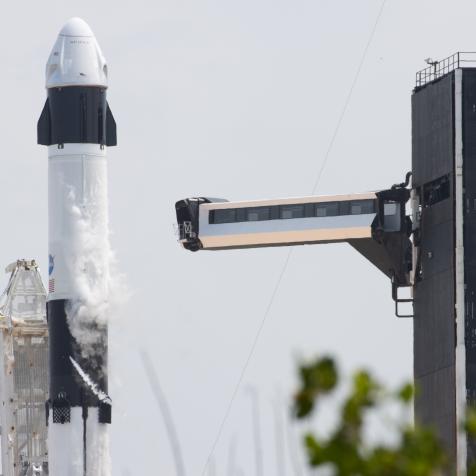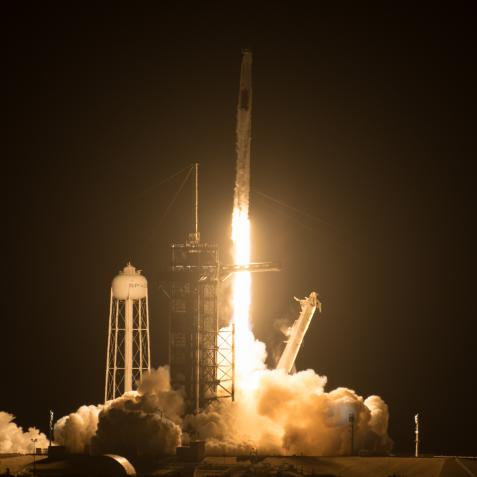
Joe Raedle
SpaceX Crew-3 Launch for NASA to Blast Off Wednesday
After the NASA/SpaceX launch experienced a series of delays, Crew-3 is set to lift off no earlier than 9:03 P ET from NASA's Kennedy Space Center tomorrow!
Watch SPACE LAUNCH LIVE: CREW-3 LIFT OFF on Science Channel at 8 P ET Wednesday, November 10.
After previous delays for a crewmember's non-emergency medical issue and poor weather conditions, SpaceX's Crew-3 mission is targeted to launch no earlier than 9:03 pm ET on Wednesday, November 10.
The SpaceX Crew Dragon spacecraft and Falcon 9 rocket remain at the Launch Complex ready for their journey tomorrow.
NASA astronauts Raja Chari, Tom Marshburn, Kayla Barron, and European Space Agency (ESA) astronaut Matthias Maurer will be aboard the spacecraft. Maurer will serve as mission specialist, staying aboard the ISS for a six-month science mission until April 2022.

Orlando Sentinel
SpaceX Crew-3 mission astronauts, from left, Matthias Maurer, mission specialist; Tom Marshburn, pilot; Raja Chari, mission commander, and Kayla Barron, mission specialist, arrive at Kennedy Space Center, at Kennedy Space Center, Florida on Oct. 26, 2021.
After mission teams reviewed launch and return opportunities for both Crew-2 and Crew-3 to and from the International Space Station (ISS), NASA decided to return the SpaceX Crew-2 mission ahead of the Crew-3 launch.
This is the SpaceX Crew Dragon’s third crew rotation and fourth flight with astronauts aboard. Crew-2, whose members included NASA astronauts Megan McArthur and Shane Kimbrough, as well as Japan Aerospace Exploration Agency astronaut Akihiko Hoshide, and ESA astronaut Thomas Pesquet, launched in April and splashed down safely in the Gulf of Mexico Monday night.
Dive Deeper into the Cosmos
Journey Through the Cosmos in an All-New Season of How the Universe Works
The new season premieres on Science Channel and streams on discovery+.



















